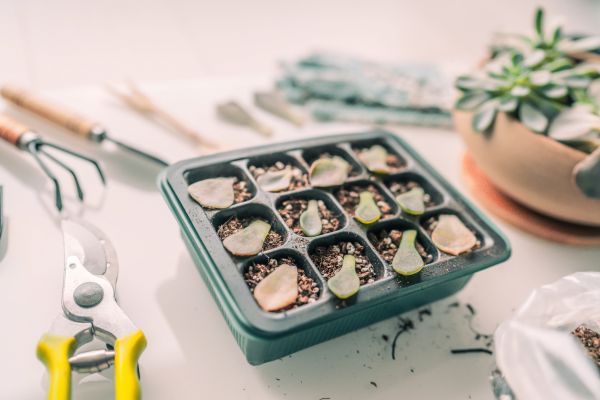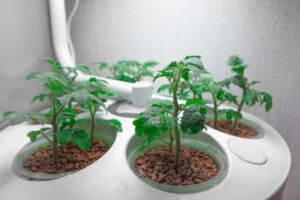Indoor plants, with their captivating allure and myriad of benefits, have become cherished companions within our living spaces. As we embrace the beauty and tranquility they bring to our homes, the desire to expand our indoor garden naturally arises. This desire to propagate, to nurture new life from existing plants, unlocks a realm of horticultural possibilities that enriches our connection with nature and deepens our appreciation for the wonders of plant life. Welcome to the world of plant propagation, where the art of multiplying indoor plants becomes a journey of growth, learning, and nurturing.
In this comprehensive guide to propagating indoor plants, we embark on an enchanting adventure that transcends the ordinary realm of plant care. Propagation is an ancient practice that lies at the heart of horticulture, dating back to the earliest days of human cultivation. It is a testament to our deep-rooted connection with the natural world, as we harness the power of life itself to create new botanical wonders. From the simple elegance of stem cuttings to the excitement of growing plants from seeds and the artful division of clumping species, each method of propagation offers its unique set of benefits and challenges.
Propagation not only allows us to expand our indoor garden with ease but also presents an opportunity for exploration and discovery. As we delve into the intricacies of plant propagation, we unveil the secrets of asexual and sexual reproduction, unlocking the potential to clone plants with desirable traits or embrace the thrill of genetic diversity and novelty. Moreover, propagation offers a path of renewal and rejuvenation, breathing new life into aging or overgrown indoor plants and encouraging continuous growth and vitality.
Through this guide, we shall explore the techniques and best practices of propagating indoor plants, delving into the artistry of each method and understanding the unique needs and preferences of various plant species. From the moment we take our first stem cutting to the joyous day we witness the emergence of new leaves and blooms from a seed, we become active participants in the symphony of life, a symphony that reverberates within the heart of our indoor garden. So, join us on this journey of propagation, where each step we take nurtures the beauty, diversity, and resilience of our indoor plant kingdom.
Understanding Plant Propagation and Its Benefits
Plant propagation is the art of creating new plants from existing ones, either sexually or asexually. Asexual propagation involves taking a part of a parent plant and growing it into an independent new plant with the same genetic makeup. On the other hand, sexual propagation involves using seeds to produce offspring with unique genetic variations. Both methods offer distinct advantages in expanding our indoor garden.
Asexual propagation is particularly advantageous when we wish to maintain the exact characteristics of a specific plant. It allows us to clone plants with desirable traits, such as vibrant foliage, unique patterns, or prolific blooms. This method is ideal for propagating indoor plants that may be challenging to grow from seeds or for those that do not produce viable seeds at all.
On the other hand, sexual propagation through seeds offers an opportunity for exciting exploration, as it brings forth genetic diversity and unpredictability. Growing indoor plants from seeds allows us to experience the wonder of witnessing new traits, colors, or growth habits manifest in the offspring. This journey of discovery adds a delightful element of surprise and novelty to our indoor gardening endeavors.
Propagation by Stem Cuttings
Propagation by stem cuttings is one of the most popular and straightforward methods of asexual propagation. It involves snipping a healthy stem from the parent plant and encouraging it to develop roots and form a new plant. For most indoor plants, the best time to take stem cuttings is during the active growing season, such as spring or early summer, when the plants have ample energy to root and establish themselves.
To propagate using stem cuttings, select a healthy, non-flowering stem and cut it just below a node with a sharp, clean knife or scissors. Remove any lower leaves, leaving a few at the top. Dip the cut end in rooting hormone (if desired) to promote root development, then plant the cutting in a well-draining potting mix. Keep the soil consistently moist and provide a warm, humid environment to encourage successful rooting.
Propagation by Division
Propagation by division is a time-honored and effective technique used to multiply indoor plants that naturally produce clumps or have multiple growing points. This method involves carefully separating a healthy portion of the parent plant, complete with its roots and growing points, into individual sections. Each section, once detached, possesses the potential to develop into an independent, fully grown plant. Propagation by division not only allows us to expand our indoor garden but also aids in the rejuvenation of the parent plant, stimulating fresh growth and vitality.
The best candidates for propagation by division are indoor plants that display clumping growth habits, such as aglaonemas, ferns, and some varieties of palms. Additionally, species that develop offsets or plantlets around the base of the parent plant, like spider plants and aloe vera, also lend themselves well to this propagation method. As these plants naturally form new growing points, they offer a convenient and straightforward opportunity for division.
To successfully propagate by division, gently remove the parent plant from its pot and assess the root structure. Identify suitable sections that possess enough roots and growing points to establish themselves as individual plants. Use a clean and sharp tool to make clean cuts, ensuring minimal damage to the roots. Transplant each division into its separate container with fresh, well-draining potting mix, and water thoroughly to encourage a smooth transition and root establishment.
Propagation by division presents multiple benefits beyond increasing the number of plants in our indoor garden. It also aids in maintaining the health and vigor of the parent plant. By periodically dividing clumping species, we alleviate issues of overcrowding and competition for resources, ensuring each new division has ample space and nutrients to flourish. Moreover, this method provides an opportunity to refresh the soil and improve the overall growing conditions for both the parent plant and its newly separated offspring. As we propagate by division, we foster a harmonious indoor garden where each plant receives the individual care and attention it needs to thrive.
Propagation by Seeds
Propagation by seeds opens a realm of endless possibilities, as it introduces genetic diversity and the potential for new traits and characteristics to emerge. While not all indoor plants produce viable seeds, many do, offering a rewarding and enriching experience for indoor gardeners.
To propagate by seeds, collect ripe seeds from the parent plant, ensuring they are clean and dry. Sow the seeds in a suitable potting mix, covering them lightly with soil, and keep the soil consistently moist. Provide adequate light and warmth to support germination, which can vary depending on the plant species. As the seeds sprout and grow, transplant them into individual pots once they develop their first true leaves.
Propagation by seeds is an excellent opportunity to explore and experiment with various plant varieties, whether it’s growing uncommon or exotic species or creating new hybrid plants through cross-pollination.
Propagation by Offsets and Plantlets
Some indoor plants, such as spider plants and aloe vera, produce offsets or plantlets, which are miniature versions of the parent plant that grow attached to its base. These offsets can be detached and grown as individual plants, creating a simple and efficient method of propagation.
To propagate by offsets or plantlets, gently remove them from the parent plant once they have developed their own root system. Plant each offset or plantlet in a separate pot with suitable potting mix, providing the same care and conditions as the parent plant. This method not only allows for easy multiplication of indoor plants but also aids in rejuvenating the parent plant, encouraging new growth and vitality.
Conclusion
As we delve into the art of propagating indoor plants, we embark on a journey of growth, discovery, and renewal. Through asexual and sexual propagation techniques, we unlock the secrets of multiplying our beloved indoor garden, nurturing new life from the very essence of our green companions. Propagation is more than just a horticultural endeavor; it is a profound act of continuation, as we perpetuate the beauty and vitality of our cherished plants for generations to come.
Whether we propagate through stem cuttings, division, seeds, offsets, or plantlets, each method unveils a unique facet of indoor gardening. From cloning plants to preserving genetic traits through asexual propagation to embracing the joy of novelty and surprise with sexual propagation, we become stewards of life and diversity within our indoor garden.
As we hone our skills in propagation, we become gardeners and explorers, fostering a profound connection with nature. Our indoor garden becomes a living tapestry of growth and transformation, a testament to the harmony and resilience that exists within the natural world. With each new plant that emerges from the act of propagation, we celebrate the intricate dance of life, sowing the seeds of wonder, and cultivating a sanctuary of serenity and beauty within the heart of our homes.



